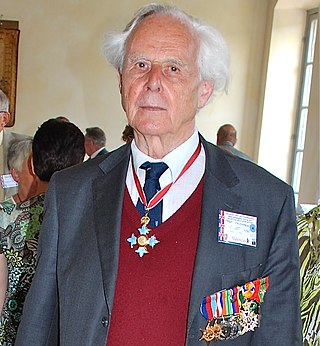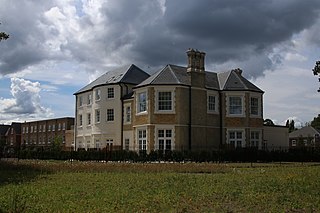Related Research Articles

The Security Service, also known as MI5, is the United Kingdom's domestic counter-intelligence and security agency and is part of its intelligence machinery alongside the Secret Intelligence Service (MI6), Government Communications Headquarters (GCHQ), and Defence Intelligence (DI). MI5 is directed by the Joint Intelligence Committee (JIC), and the service is bound by the Security Service Act 1989. The service is directed to protect British parliamentary democracy and economic interests and to counter terrorism and espionage within the United Kingdom (UK).

Moazzam Begg is a British Pakistani who was held in extrajudicial detention by the US government in the Bagram Theater Internment Facility and the Guantanamo Bay detainment camp, in Cuba, for nearly three years. Seized by Pakistani intelligence at his home in Pakistan in February 2002, he was transferred to the custody of US Army officers, who held him in the detention centre at Bagram, Afghanistan, before transferring him to Guantanamo Bay, where he was held until January 2005.

Binyam Ahmed Mohamed, also referred to as Benjamin Mohammed, Benyam Mohammed or Benyam Mohammed al-Habashi, is an Ethiopian national and United Kingdom resident, who was detained as a suspected enemy combatant by the US Government in Guantanamo Bay prison between 2004 and 2009 without charges. He was arrested in Pakistan and transported first to Morocco under the US's extraordinary rendition program, where he claimed to have been interrogated under torture.

The Defence Science and Technology Laboratory (Dstl) is an executive agency of the Ministry of Defence of the United Kingdom. Its stated purpose is "to maximise the impact of science and technology for the defence and security of the UK". The agency is headed by Paul Hollinshead as its Chief Executive, with the board being chaired by Adrian Belton. Ministerial responsibility lies with the Minister for Defence Procurement.

Michael Richard Daniell Foot, was a British political and military historian, and former British Army intelligence officer with the Special Operations Executive during the Second World War.
The term Combined Services Detailed Interrogation Centre (CSDIC) was used for facilities in the UK, the continent between 1942 and 1947, the Middle East, and South Asia. They were run by the British War Office on a joint basis involving the British Army and various intelligence agencies, notably MI5 and MI9. The CSDICs on the European mainland were:
The London Cage was an MI19 prisoner-of-war facility during and after the Second World War to mainly interrogate captured Germans, including SS personnel and members of the Nazi Party. The unit, which was located within numbers 6, 7 and 8 Kensington Palace Gardens in London, was itself investigated following accusations that it often used torture to extract information. It was wound down in early 1948.

Anthony Morris "Tony" Brooks, code name Alphonse, was an agent for the United Kingdom's clandestine Special Operations Executive (SOE) organization in France during World War II. The purpose of SOE was to conduct espionage, sabotage, and reconnaissance in countries occupied by Nazi Germany and other Axis powers. SOE agents allied themselves with French Resistance groups and supplied them with weapons and equipment parachuted in from England. Brooks received the Distinguished Service Order, Military Cross, Croix de guerre, and Légion d'honneur for his work as a leader of SOE's Pimento network sabotaging German reinforcements prior to and during the Normandy invasion. He later worked for the Foreign Office, and MI5 and MI6.

Latchmere House is a building and grounds southeast of Ham Common in Ham, in the London Borough of Richmond upon Thames, in south west London, England. The southern part of the site lies in the Royal Borough of Kingston upon Thames.

Alexander Paterson Scotland OBE (1882–1965) was a British Army officer and intelligence officer.

Camp 020 at Latchmere House in southwest London was a British interrogation centre for captured German agents during the Second World War. It was run by Lieutenant Colonel Robin "Tin Eye" Stephens. Although other wartime interrogation centres were alleged to have used torture to extract confessions, Stephens denied claims that torture had been used at Camp 020. His instructions for interrogators ordered: “Never strike a man. In the first place it is an act of cowardice. In the second place, it is not intelligent. A prisoner will lie to avoid further punishment and everything he says thereafter will be based on a false premise.”

Nathalie "Lily" Sergueiew was a double agent who worked for MI5 during World War II under the codename "Treasure". She played a significant role in the Double-Cross System, particularly by deceiving the Germans about the location of the D-Day landings.

Carole Gray Bamford, Baroness Bamford, OBE, is a British businessperson who founded the Daylesford Organic Farmshops chain and the Bamford brand of women's products.

One Day in History was a single-day initiative by several UK heritage organisations that aimed to provide a historical record of the everyday life of the British public in the early 21st century. Described as the "world's biggest blog", it encouraged UK citizens to write diary entries of 100–650 words of what they had done on 17 October 2006, and then upload them to the official website of the initiative. The project formed a part of History Matters: Pass It On, a history campaign led by several UK heritage organisations. Submissions were received until 1 November, and 46,000 entries were uploaded in this time, many of which were from students and celebrities. After being available to view on the History Matters website, the archive of the diary entries was moved to the UK Web Archive at the British Library and the library of the University of Sussex. The campaign received mixed reviews, with Institute of Historical Research's David Cannadine and The Guardian's Dave Hill speaking positively of it, whereas journalist John Plunkett termed it to be a "historical record of people with computers".
Helen Fry is a British historian, lecturer and biographer, with especial reference to the Second World War.

The Dance Years is a British documentary series created by Glenn Sims and written and presented by radio DJ Dave Pearce. It premiered on 21 July 2001 on the British channel ITV. The 14-episode series focused on dance music in the UK between 1988 and 2001, with each episode charting Pearce's personal top 10 dance tracks for a particular year. The programme also explored the year's most influential people, songs and nightclubs. Each episode was broadcast on ITV on Saturday mornings at approximately 1 a.m. Dorian Lynskey of The Guardian described The Dance Years as being part of a "bumper year" for retrospectives of dance music.
Ian Cobain is a British journalist. Cobain is best known for his investigative journalism into human rights abuses committed by the British government post-9/11, the secrecy surrounding the British state and the legacy of the Northern Ireland's Troubles.

The Movie Chart Show is a British film criticism TV series. It was broadcast on Channel 5, and featured film news, reviews, previews, interviews, competitions, and a countdown on the top 10 films at the UK box office. The series was hosted from 24 January 1999 by Gail Porter with Mark Forrest, before presenting was taken over by Steve McKenna, who hosted the show until its cancellation in 2002. The Movie Chart Show was produced by Worldwide Entertainment News, and distributed by Mentorn International. It aired twice a week, on Mondays and Fridays, and was promoted to a primetime slot in July 1999.
According to UN experts, the Guantanamo Bay detention facility in Cuba is a site of "unparalleled notoriety" and has been condemned as a site of "unrelenting human rights violations." The facility has been holding prisoners for over 20 years. A document released by the Amnesty International reported ongoing and historic human rights violations at the Guantánamo Bay detention facility.
References
- ↑ Foot, M.R.D; Langley, J.M (1979). MI9: Escape and Evasion 1939–1945. London: Book Club Associates.
- ↑ Hoare, Oliver (2000). Camp 020: MI5 and the Nazi Spies—The Official History of MI5's Wartime Interrogation Centre. London: Public Record Office. ISBN 1-903365-08-2.
- ↑ Scotland, A.P. (1957). The London Cage. London: Evans Brothers Ltd.
- ↑ "Churchill sent MI-19 to find evidence of collaboration". London: BBC News. 20 December 2010. Retrieved 19 November 2012.
